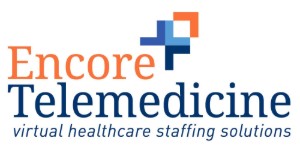One of the best ways that telemedicine can be put to use is in facilitating needed care for patients who suffer from chronic diseases. Since the symptoms associated with chronic diseases tend to recur for long periods of time, it becomes important that a patient’s medical condition is frequently monitored to determine if there is any worsening of the situation.
While this could put a tremendous burden on the number of visits which can be effectively managed at a patient’s preferred clinic or doctor office, it creates an ideal scenario for handling the examinations via telemedicine. Not only does this relieve the burden of large numbers of doctor office visits, but it’s a very cost-effective option for both physician and patient. Some examples where telemedicine has already proven to be a highly effective vehicle for the delivery of healthcare associated with chronic diseases are described below.
Congestive Heart Failure
Congestive heart failure is most often caused by arterial blockages, high blood pressure, compromised heart muscles, and diseases of the arteries. The end result of any of these is some degree of weakening of the heart itself, and a degradation of the blood supply process. Because any successful treatment of congestive heart failure requires active patient involvement, the likelihood of favorable outcomes is not as high as it might be, and many patients actually end up with multiple stays in the hospital.
Telemedicine can alter this whole model, because it becomes very easy for a patient to become involved in self-monitoring and personal wellness. Patients can be provided with monitoring devices to be used at home, so that information can be remotely gathered and forwarded to the doctor’s office, for instance, including data on oxygen saturation level, blood pressure, heart rate, and body weight.
More advanced information can be obtained via electrocardiograms, electronic stethoscopes, and videoconferencing interviews directly with the doctor. Patients also tend to become much better educated about their conditions, and what they can do personally to help with treatment, e.g. adopt a healthier lifestyle, make better choices, etc. With the patient taking a much more active role in his/her own treatment, outcomes can become more favorable, with fewer hospital visits required, and less of a drain on a physician’s time.
Chronic Obstructive Pulmonary Disease
This term is actually used as a kind of group designation for various types of lung disease which progress over a period of time, and are considered very serious medical conditions. Some of the specific types of COPD are chronic bronchitis and emphysema, and all types of COPD can be managed much better when there is frequent monitoring of the status of the patient’s lungs.
This is where telemedicine can make a huge contribution to the treatment of COPD, because it can involve patients with self-monitoring of their lungs, so that medical professionals are constantly aware of current conditions. Lung status can be measured using various kinds of equipment such as telespirometry, and real-time consultations can be set up with pulmonologists.
Programs have already been established to involve patients with their own treatment, by including four major areas of involvement: tele-consultations, online exercise programs, oversight by ambulant activity coaches, and providing web portals for self treatment. Preliminary programs have demonstrated a high rate of success in reducing mortality rates and improving the overall health of COPD patients, especially as it relates to identifying potential problems at the earliest possible time.
Strokes and other Cerebral Vascular Incidents
In the past, it has been tremendously expensive to carry on a continuing program with stroke victims, and since strokes are extremely time-critical, prompt treatment is of the utmost importance. Within mere minutes, significant brain damage can be caused by a temporary blockage in blood circulation, making instant healthcare a must.
Telemedicine can play a very important role in providing this kind of immediate care, because it can facilitate rapidly arranged consultations between medical experts. It can also provide treatment remotely, with a medical professional directing steps to be taken on one end, and a qualified medical professional on the other end. With time being so important to the well-being, and sometimes the survival of a stroke suffer, telemedicine can be an essential part of the treatment process in a great many situations.

